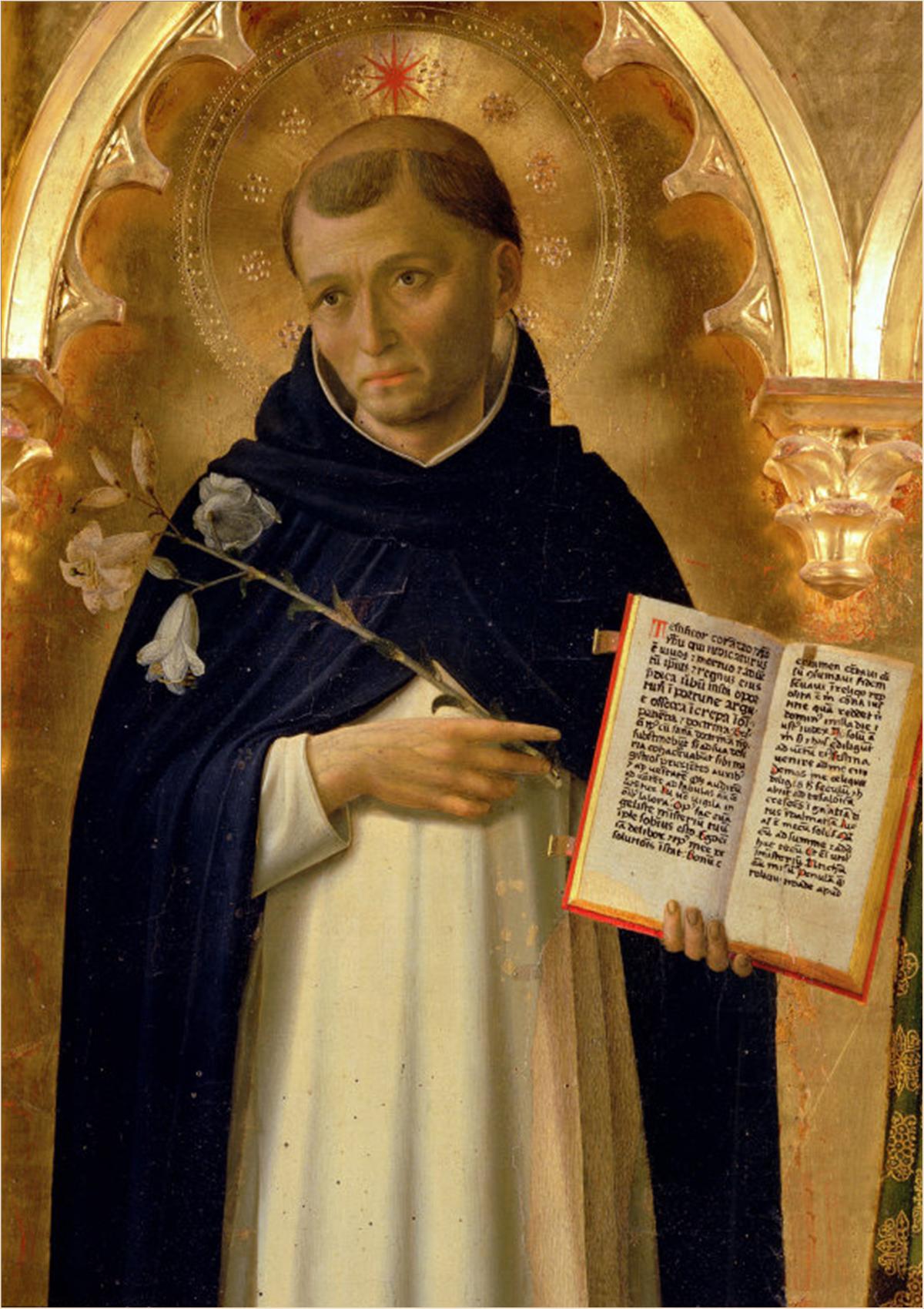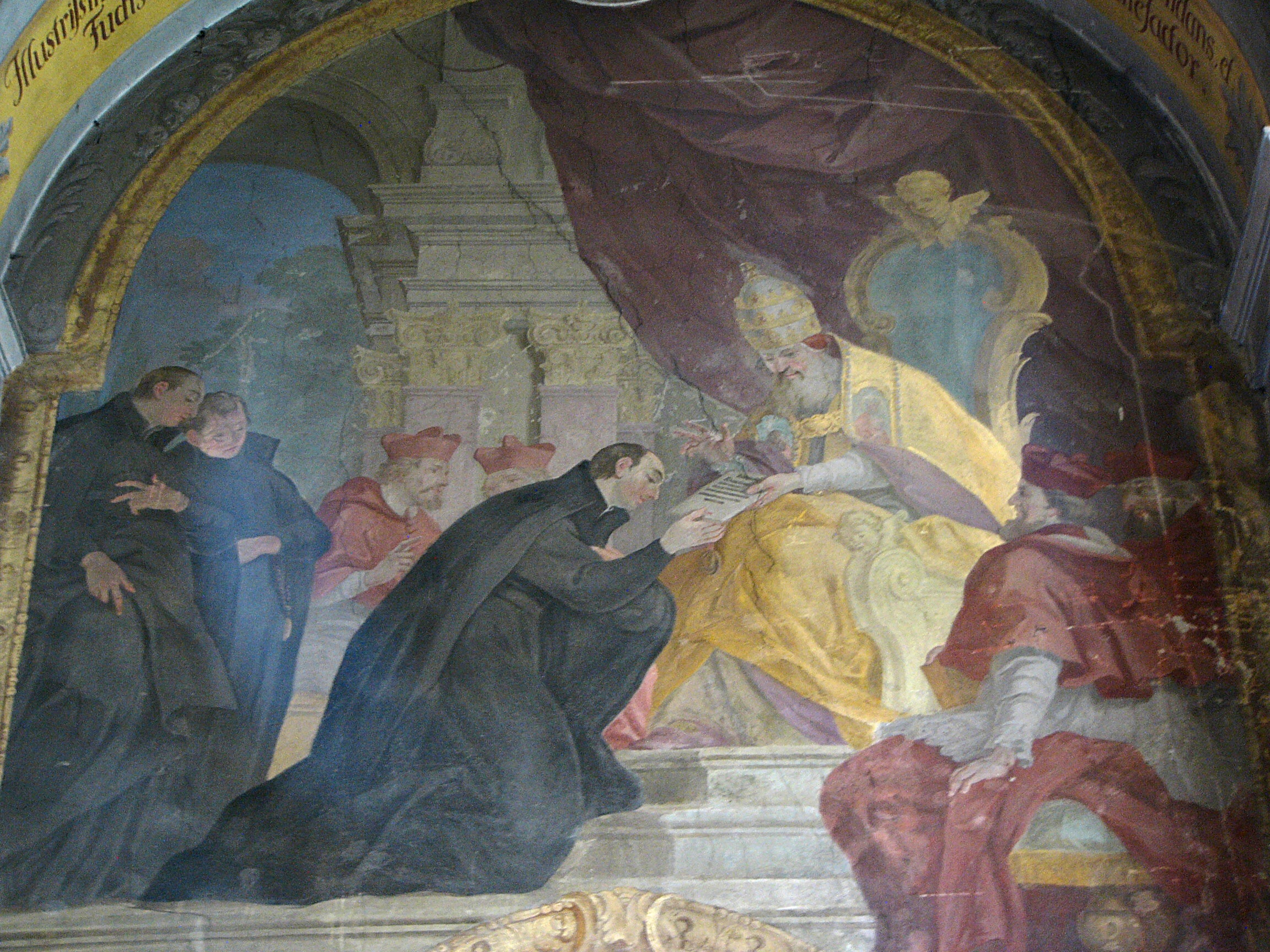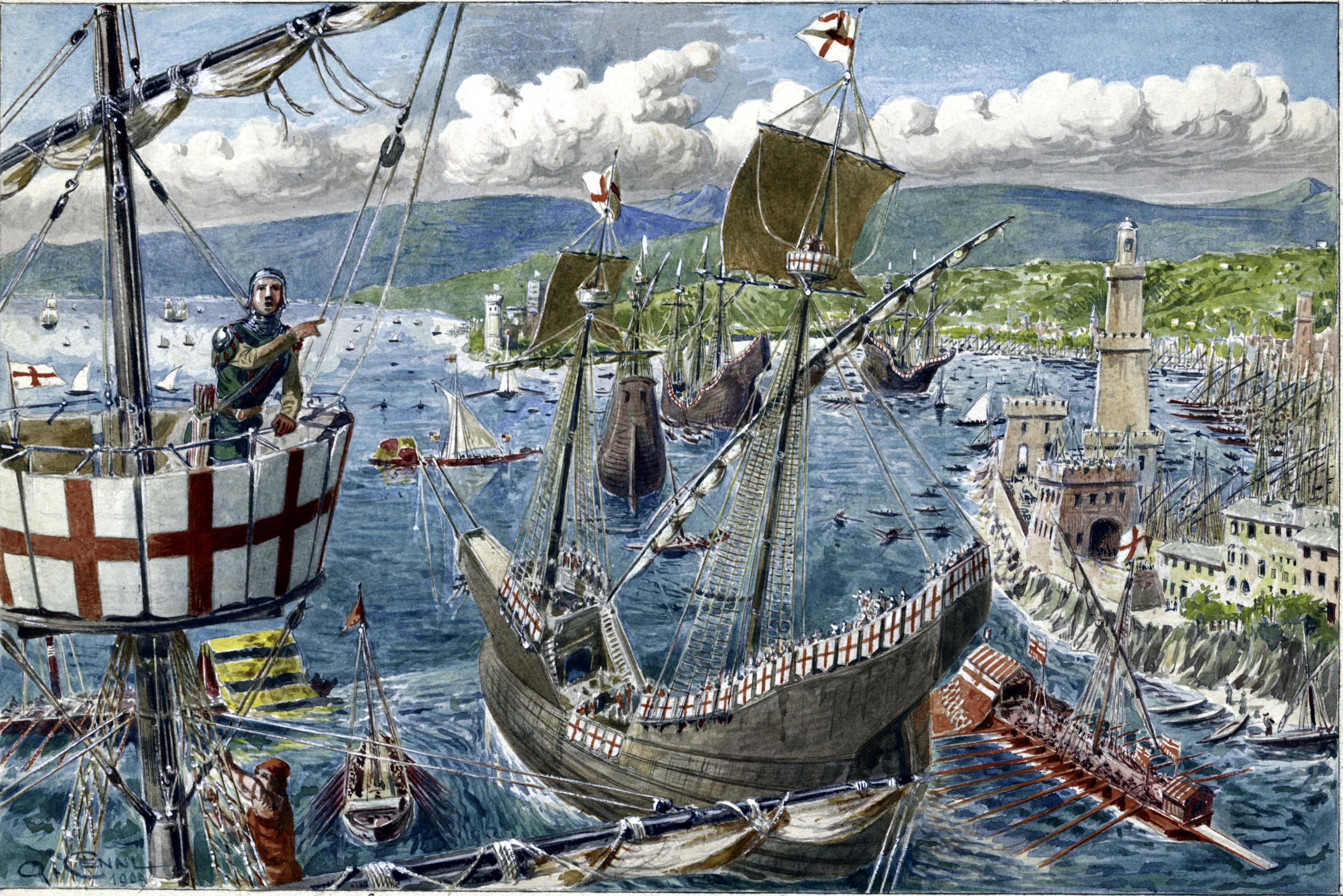|
Ippolito Maria Beccaria
Ippolito Maria Beccaria (1550 – 3 August 1600) was the Master of the Order of Preachers from 1589 to 1600. Biography Ippolito Maria Beccaria was born in Mondovì in 1550, the son of Enrichetto Beccaria and his wife Caterina Donzelli. He joined the Dominican Order in 1564 at Santa Maria delle Grazie in Milan. He then studied at the University of Bologna, then became a professor of theology. He later became Master of the Sacred Palace. He was then prior of Santa Sabina. At a provincial chapter held in Mantua in 1584, he was elected master of the province of Lombardy, as the preferred candidate of Pope Sixtus V and Cardinal Bonelli. He served as the inquisitor of Milan in 1588. On 21 May 1589 a general chapter of the Dominican Order elected Beccaria as Master of the Order of Preachers. He began a visitation of the Kingdom of Naples on 22 June 1589. On 28 April 1591 he began a visitation to the monasteries of northern Italy. On 3 April 1592 he returned to Rome to pay h ... [...More Info...] [...Related Items...] OR: [Wikipedia] [Google] [Baidu] |
Master Of The Order Of Preachers
The Master of the Order of Preachers is the Superior General of the Order of Preachers, commonly known as the Dominicans. The Master of the Order of Preachers is ''ex officio'' Grand Chancellor of the Pontifical University of Saint Thomas Aquinas, ''Angelicum'' in Rome, Italy, and of the Pontifical and Royal University of Santo Tomas in Manila, Philippines. Fr. Gerard Francisco Timoner III is the Master of the Order, as of his 2019 election at the General Chapter held in Biên Hòa Biên Hòa (Northern accent: , Southern accent: ) is the capital city of Đồng Nai Province, Vietnam and part of the Ho Chi Minh City metropolitan area and located about east of Ho Chi Minh City, to which Biên Hòa is linked by Vietnam Hig .... Masters of the Order Notes References {{Reflist Dominican Order Dominicans * ... [...More Info...] [...Related Items...] OR: [Wikipedia] [Google] [Baidu] |
Inquisitor
An inquisitor was an official (usually with judicial or investigative functions) in an inquisition – an organization or program intended to eliminate heresy and other things contrary to the doctrine or teachings of the Catholic faith. Literally, an inquisitor is one who "searches out" or "inquires" ( Latin ''inquirere'' < ''quaerere'', 'to seek'). Inquisitors sought out the social networks that people used to spread heresy. There were accounts where the Inquisition could not tell who was a heretic or devout, and they were killed anyway. One of these accounts was at the storming of . The abbot was recorded as saying “Kill them. For God knows who are his.” This brought up concern about the role the Inquisition w ... [...More Info...] [...Related Items...] OR: [Wikipedia] [Google] [Baidu] |
Superior General Of The Society Of Jesus
The superior general of the Society of Jesus is the leader of the Society of Jesus, the Catholic religious order also known as the Jesuits. He is generally addressed as Father General. The position sometimes carries the nickname of the Black Pope, because of his responsibility for the largest male religious order, in contrast with the white garb of the pope. The thirty-first and current superior general is Fr Arturo Sosa, elected by the 36th General Congregation on 14 October 2016. Titles The formal title in Latin is ''Praepositus Generalis'', which may fairly be rendered as "superior general" or even, "president general". The term is like that of military usage (and Ignatius of Loyola had a military background) which is derived from "general", as opposed to "particular". This usage is consistent with other Catholic religious orders, like the Dominicans' " master general", Franciscans' " minister general", Carthusians' "prior general", and with civil posts such as Postmaste ... [...More Info...] [...Related Items...] OR: [Wikipedia] [Google] [Baidu] |
Luis De Molina
Luis de Molina (29 September 1535 – 12 October 1600) was a Spanish Jesuit priest and scholastic, a staunch defender of free will in the controversy over human liberty and God's grace. His theology is known as Molinism. Life From 1551 to 1562, Molina studied law in Salamanca, philosophy in Alcala de Henares, and theology in Coimbra. After 1563, he became a professor at the University of Coimbra, and afterward taught at the University of Évora, Portugal. From this post he was called, at the end of twenty years, to the chair of moral theology in Madrid, where he died. Besides other works he wrote ''De liberi arbitrii cum gratiae donis, divina praescientia, praedestinatione et reprobatione concordia'' (4 vols., Lisbon, 1588); a commentary on the first part of the ''Summa Theologiae'' of Thomas Aquinas (2 vols., fol., Cuenca, 1593); and a treatise ''De jure et justitia'' (6 vols., 1593–1609). It is to the first of these that his fame is principally due. It was an ... [...More Info...] [...Related Items...] OR: [Wikipedia] [Google] [Baidu] |
Jesuits
The Society of Jesus ( la, Societas Iesu; abbreviation: SJ), also known as the Jesuits (; la, Iesuitæ), is a religious order (Catholic), religious order of clerics regular of pontifical right for men in the Catholic Church headquartered in Rome. It was founded in 1540 by Ignatius of Loyola and six companions, with the approval of Pope Paul III. The society is engaged in evangelization and apostolic ministry in 112 nations. Jesuits work in education, research, and cultural pursuits. Jesuits also give retreats, minister in hospitals and parishes, sponsor direct social and humanitarian ministries, and promote Ecumenism, ecumenical dialogue. The Society of Jesus is consecrated under the patron saint, patronage of Madonna della Strada, a title of the Blessed Virgin Mary, and it is led by a Superior General of the Society of Jesus, Superior General. The headquarters of the society, its Curia, General Curia, is in Rome. The historic curia of Ignatius is now part of the attached to t ... [...More Info...] [...Related Items...] OR: [Wikipedia] [Google] [Baidu] |
Habsburg Spain
Habsburg Spain is a contemporary historiographical term referring to the huge extent of territories (including modern-day Spain, a piece of south-east France, eventually Portugal, and many other lands outside of the Iberian Peninsula) ruled between the 16th and 18th centuries (1516–1713) by kings from the Spanish branch of the House of Habsburg (also associated with its role in the history of Central and Eastern Europe). Habsburg Spain was a composite monarchy and a personal union. The Habsburg Hispanic Monarchs (chiefly Charles I and Philip II) reached the zenith of their influence and power ruling the Spanish Empire. They controlled territories over the five continents, including the Americas, the East Indies, the Low Countries, Belgium, Luxembourg, and territories now in Italy, France and Germany in Europe, the Portuguese Empire from 1580 to 1640, and various other territories such as small enclaves like Ceuta and Oran in North Africa. This period of Spanish h ... [...More Info...] [...Related Items...] OR: [Wikipedia] [Google] [Baidu] |
Genoa
Genoa ( ; it, Genova ; lij, Zêna ). is the capital of the Regions of Italy, Italian region of Liguria and the List of cities in Italy, sixth-largest city in Italy. In 2015, 594,733 people lived within the city's administrative limits. As of the 2011 Italian census, the Province of Genoa, which in 2015 became the Metropolitan City of Genoa, had 855,834 resident persons. Over 1.5 million people live in the wider metropolitan area stretching along the Italian Riviera. On the Gulf of Genoa in the Ligurian Sea, Genoa has historically been one of the most important ports on the Mediterranean Sea, Mediterranean: it is currently the busiest in Italy and in the Mediterranean Sea and twelfth-busiest in the European Union. Genoa was the capital of Republic of Genoa, one of the most powerful maritime republics for over seven centuries, from the 11th century to 1797. Particularly from the 12th century to the 15th century, the city played a leading role in the commercial trade in Euro ... [...More Info...] [...Related Items...] OR: [Wikipedia] [Google] [Baidu] |
Polish–Lithuanian Commonwealth
The Polish–Lithuanian Commonwealth, formally known as the Kingdom of Poland and the Grand Duchy of Lithuania, and, after 1791, as the Commonwealth of Poland, was a bi- confederal state, sometimes called a federation, of Poland and Lithuania ruled by a common monarch in real union, who was both King of Poland and Grand Duke of Lithuania. It was one of the largest and most populous countries of 16th- to 17th-century Europe. At its largest territorial extent, in the early 17th century, the Commonwealth covered almost and as of 1618 sustained a multi-ethnic population of almost 12 million. Polish and Latin were the two co-official languages. The Commonwealth was established by the Union of Lublin in July 1569, but the Crown of the Kingdom of Poland and the Grand Duchy of Lithuania had been in a ''de facto'' personal union since 1386 with the marriage of the Polish queen Jadwiga (Hedwig) and Lithuania's Grand Duke Jogaila, who was crowned King '' jure uxoris'' Władys� ... [...More Info...] [...Related Items...] OR: [Wikipedia] [Google] [Baidu] |
Kingdom Of Bohemia
The Kingdom of Bohemia ( cs, České království),; la, link=no, Regnum Bohemiae sometimes in English literature referred to as the Czech Kingdom, was a medieval and early modern monarchy in Central Europe, the predecessor of the modern Czech Republic. It was an Imperial State in the Holy Roman Empire, and the Bohemian king was a prince-elector of the empire. The kings of Bohemia, besides the region of Bohemia proper itself, also ruled other lands belonging to the Bohemian Crown, which at various times included Moravia, Silesia, Lusatia, and parts of Saxony, Brandenburg, and Bavaria. The kingdom was established by the Přemyslid dynasty in the 12th century from the Duchy of Bohemia, later ruled by the House of Luxembourg, the Jagiellonian dynasty, and from 1526 the House of Habsburg and its successor, the House of Habsburg-Lorraine. Numerous kings of Bohemia were also elected Holy Roman Emperors, and the capital, Prague, was the imperial seat in the late 14th cent ... [...More Info...] [...Related Items...] OR: [Wikipedia] [Google] [Baidu] |
Habsburg Monarchy
The Habsburg monarchy (german: Habsburgermonarchie, ), also known as the Danubian monarchy (german: Donaumonarchie, ), or Habsburg Empire (german: Habsburgerreich, ), was the collection of empires, kingdoms, duchies, counties and other polities that were ruled by the House of Habsburg, especially the dynasty's Austrian branch. The history of the Habsburg monarchy can be traced back to the election of Rudolf I as King of Germany in 1273 and his acquisition of the Duchy of Austria for the Habsburg in 1282. In 1482, Maximilian I acquired the Netherlands through marriage. Both realms passed to his grandson and successor, Charles V, who also inherited the Spanish throne and its colonial possessions, and thus came to rule the Habsburg empire at its greatest territorial extent. The abdication of Charles V in 1556 led to a division within the dynasty between his son Philip II of Spain and his brother Ferdinand I, who had served as his lieutenant and the elected king of Hungary a ... [...More Info...] [...Related Items...] OR: [Wikipedia] [Google] [Baidu] |
Santi Giovanni E Paolo, Venice
The Basilica dei Santi Giovanni e Paolo, known in Venetian as San Zanipolo, is a church in the Castello ''sestiere'' of Venice, Italy. One of the largest churches in the city, it has the status of a minor basilica. After the 15th century the funeral services of all of Venice's doges were held here, and twenty-five doges are buried in the church. Description The huge brick edifice was designed in the Italian Gothic style, and completed in the 1430s. It is the principal Dominican church of Venice, and as such was built to hold large congregations. It is dedicated to John and Paul, not the Biblical Apostles of the same names, but two obscure martyrs of the Early Christian church in Rome, whose names were recorded in the 4th century but whose legend is of a later date. In 1246, Doge Jacopo Tiepolo donated some swampland to the Dominicans after dreaming of a flock of white doves flying over it. The first church was demolished in 1333, when the current church was begun. It was n ... [...More Info...] [...Related Items...] OR: [Wikipedia] [Google] [Baidu] |
Pope Clement VIII
Pope Clement VIII ( la, Clemens VIII; it, Clemente VIII; 24 February 1536 – 3 March 1605), born Ippolito Aldobrandini, was head of the Catholic Church and ruler of the Papal States from 2 February 1592 to his death in March 1605. Born in Fano, Italy to a prominent Florentine family, he initially came to prominence as a canon lawyer before being made a Cardinal-Priest in 1585. In 1592 he was elected Pope and took the name of Clement. During his papacy he effected the reconciliation of Henry IV of France to the Catholic faith and was instrumental in setting up an alliance of Christian nations to oppose the Ottoman Empire in the so-called Long War. He also successfully adjudicated in a bitter dispute between the Dominicans and the Jesuits on the issue of efficacious grace and free will. In 1600 he presided over a jubilee which saw many pilgrimages to Rome. He presided over the trial and execution of Giordano Bruno and implementing strict measures against Jewish resid ... [...More Info...] [...Related Items...] OR: [Wikipedia] [Google] [Baidu] |






_Tafel_03.png)